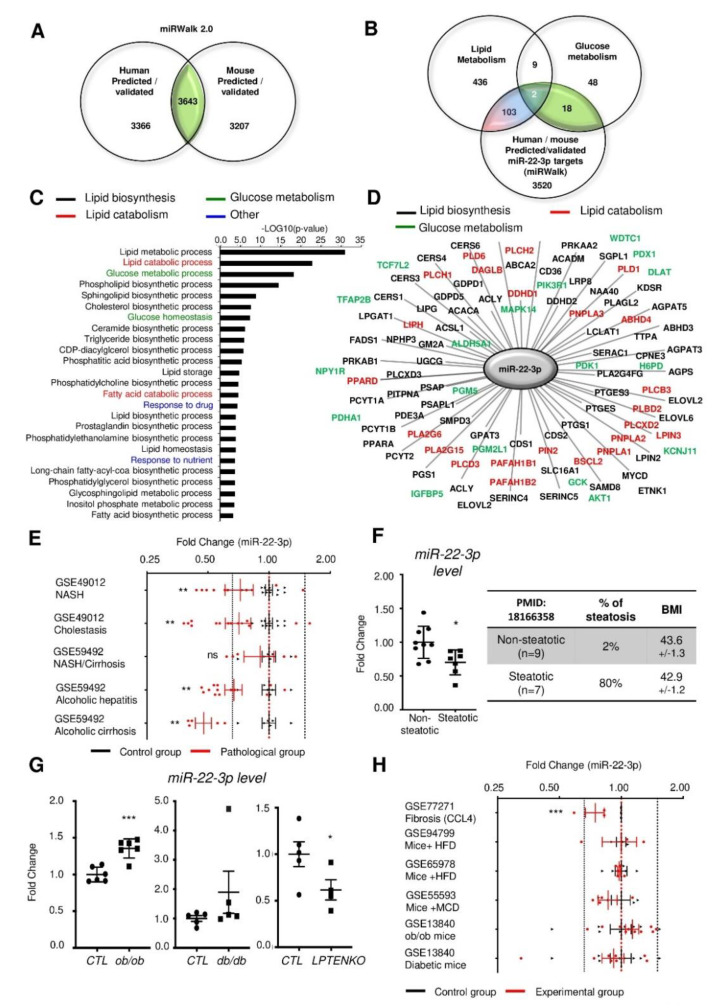Figure 1.
MiR-22-3p expression in the liver is not a reliable marker of non-alcoholic fatty liver disease (NAFLD) and/or non-alcoholic steatohepatitis (NASH). (A) Comparison of validated and predicted miR-22-3p targets in mice and humans from the miRwalk 2.0 database. (B) Common targets between mouse and human in Panel A are compared with a list of lipid/glucose metabolism-related genes obtained with the MetaCoreTM software (123 candidates). (C) The 123 candidates that were identified, were then subjected to a Gene Ontology analysis for biological processes. Genes enriched in lipid biosynthesis, lipid catabolism, and glucose metabolism biological processes are represented in (D). (E) Gene Expression Omnibus (GEO) datasets analyses of miR-22-3p expression in human fatty liver disease. (F) MiR-22-3p expression in human liver biopsies of non-steatotic (n = 9) and steatotic (n = 7) obese patients. (G) MiR-22-3p expression in liver tissues from 2-months old ob/ob, db/db and 4-months old LPTENKO (Liver-specific PTENKO mice) and their respective controls. (H) GEO dataset analyses of miR-22-3p expression in mouse fatty liver disease models (CCL4—carbon tetrachloride, HFD—high fat diet, MCD—methionine choline-deficient diet). Data represent the means ± standard error of the mean (SEM). * p < 0.05, ** p < 0.01, *** p < 0.001 compared with controls (Student t-test).

